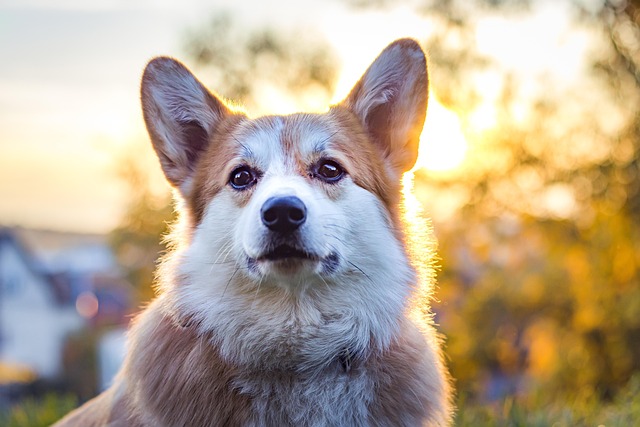
What is glaucoma in a dog?
You might notice your dog squinting more at mealtime or avoiding bright sunlight—these small changes could be early signs of a serious eye condition.
When we joyfully watch our dogs running around lively and being mischievous, it's hard to imagine that they could suddenly encounter a health crisis. Esophageal obstruction in dogs is such a heart - wrenching situation. Once it occurs, every owner will be extremely anxious. So, how exactly should esophageal obstruction in dogs be treated?
First and foremost, it is crucial to understand the symptoms of esophageal obstruction in dogs. When a dog has esophageal obstruction, there will be obvious abnormal manifestations. It may suddenly make frequent swallowing movements, as if there is something stuck in its throat that it can't swallow down. There will also be excessive drooling, with saliva flowing uncontrollably from the corners of its mouth, and sometimes accompanied by coughing and retching. If the obstruction is severe, the dog may show difficulty breathing. Since the esophagus and trachea are very close, the obstruction may compress the trachea and affect breathing. Watching the dog suffer, the owner's heart must feel as if it's being pricked by needles.

Once you suspect that your dog has esophageal obstruction, before taking it to the hospital, the owner can first carry out some simple emergency treatments. If the dog has just swallowed a foreign object causing the obstruction and the foreign object is stuck in a relatively shallow position, such as near the mouth or throat, the owner can carefully open the dog's mouth and check the situation of the foreign object. If the foreign object can be seen and safely removed, for example, a large bone fragment, the owner can carefully clamp it out with tweezers, but be sure not to damage the dog's mouth and throat. However, if the foreign object is in a deep position, never blindly reach in or use tools to dig, so as not to push the foreign object deeper and aggravate the obstruction.
After arriving at the pet hospital, the veterinarian will adopt corresponding treatment methods according to the specific situation of the dog. For some small and soft - textured foreign objects, such as a small piece of a rubber toy that has been swallowed, the doctor may try to remove the foreign object through an endoscope. This method is relatively minimally invasive and causes less harm to the dog's body. With the help of the endoscope, the doctor can clearly see the position of the foreign object and then use special tools to remove it. During this process, the dog needs to be anesthetized to ensure that it does not move during the operation and reduce pain. Watching the dog lying on the operating table, the owner's heart is in their throat, hoping that everything goes smoothly.
If the foreign object is large and hard - textured, such as a swallowed stone, and cannot be removed by an endoscope, surgical operation may be required. The surgical operation needs to make a small incision in the dog's neck or chest to directly expose the esophagus and then remove the foreign object. This is a relatively complex operation that requires high - level skills from the doctor and also has certain risks. But for the dog's health, the owner often chooses to let the dog undergo the operation without hesitation. After the operation, the dog needs a period of recovery. The owner should take good care of it, change the dressing on time every day, and observe the healing of the wound.
In addition to removing the foreign object, the subsequent care cannot be ignored. During the dog's recovery period, provide it with light and easily digestible food, such as liquid or semi - liquid food. You can soak the dog food until soft before feeding it, or prepare some pet - specific nutritional pastes. At the same time, ensure that the dog has sufficient rest and avoid excessive activity that may pull on the wound. Also, pay close attention to the dog's mental state and eating situation. If the dog shows abnormal conditions such as fever, vomiting, and loss of appetite, take it to the hospital for a follow - up visit in a timely manner.
Dogs are our most loyal companions, bringing us endless joy and company. When they encounter a health crisis like esophageal obstruction, we need to be calmer and more patient, take the correct treatment methods in a timely manner, and give them meticulous care. Let's use our full love to help dogs overcome the disease, regain their former vitality, and continue to accompany us through every wonderful moment.

You might notice your dog squinting more at mealtime or avoiding bright sunlight—these small changes could be early signs of a serious eye condition.

Let’s set the scene: It’s a sweltering Phoenix afternoon—105°F outside—and you rushed your 2-year-old Lab mix, Cooper, on a quick walk to “get it over with.”

Let’s get real: You’re in your Miami apartment, watching your 3-year-old Corgi, Loki, struggle to climb the stairs to your second-floor unit.

Many dog owners brush off occasional scratching as just “dog behavior,” but persistent itching often signals something more—like a food allergy.

You might first notice your dog scratching more than usual—chewing at their paws until the fur looks thin, or rubbing their face against the couch nonstop.

Let’s be real: You’re standing in your Chicago apartment, watching your 3-year-old Beagle, Max, huff and puff just to climb onto the couch.